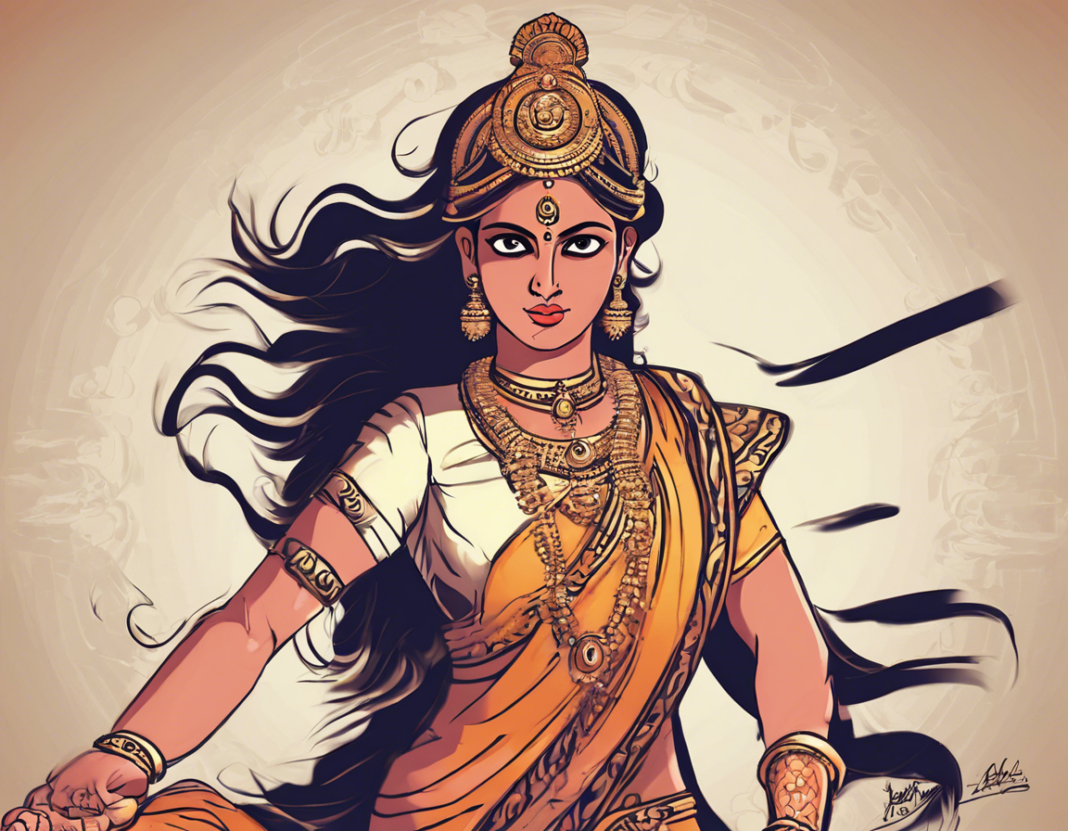Introduction
Jhansi Lakshmi Bai, also known as Rani Lakshmi Bai, was one of the most renowned freedom fighters and leaders of India’s First War of Independence in 1857. Her indomitable spirit, courage, and sacrifice have left an indelible mark in the annals of Indian history. Born in Varanasi on November 19, 1828, she was named Manikarnika Tambe and was later known as Manu Bai. She was married to Raja Gangadhar Rao of Jhansi, and after his untimely demise, she assumed the mantle of leadership and became the warrior queen of Jhansi.
Early Life
Manikarnika was raised in an atmosphere of valor and courage, which played a significant role in shaping her personality. Her upbringing instilled in her a sense of independence and fearlessness, traits that would define her future exploits. She received training in martial arts, horse riding, and sword fighting from a young age, skills that would serve her well in the years to come.
The Revolt of 1857
The year 1857 marked a turning point in Indian history, as the country rose up against British colonial rule in what came to be known as the Indian Rebellion of 1857 or the Sepoy Mutiny. Rani Lakshmi Bai’s role in the rebellion was pivotal, and she emerged as one of its most iconic figures.
The Siege of Jhansi
When the rebellion reached Jhansi, Rani Lakshmi Bai took charge of the defense of the city. Despite being outnumbered and outgunned, she displayed remarkable strategic acumen and valor in the face of adversity. The Siege of Jhansi was a testament to her courage and leadership, as she defended her kingdom against the British forces with unwavering determination.
Battle of Kotah-ki-Serai
One of the most celebrated battles fought by Rani Lakshmi Bai was the Battle of Kotah-ki-Serai, where she led her forces into a fierce confrontation with the British army. Despite facing overwhelming odds, she refused to back down and fought valiantly to protect her people and her kingdom.
The Legacy of Rani Lakshmi Bai
Rani Lakshmi Bai’s legacy continues to inspire generations of Indians to this day. Her courage, sacrifice, and unwavering commitment to the cause of freedom have made her a symbol of resistance against oppression and colonialism. Her famous cry of “Krantiveer” (I shall fight for freedom) resonates with all those who seek justice and equality.
Remembering the Fearless Warrior
On her death anniversary, which falls on June 18, people across India pay homage to Rani Lakshmi Bai and remember her as the fearless warrior queen who defied all odds and fought for the dignity and freedom of her people. Her legacy serves as a beacon of hope and inspiration for all those who strive for a just and equitable society.
Conclusion
Rani Lakshmi Bai’s life and legacy are a testament to the power of courage, determination, and sacrifice in the face of adversity. She stood tall in the face of oppression and tyranny, inspiring countless individuals to rise up and fight for their rights. Her unwavering commitment to the cause of freedom continues to inspire generations, making her a true symbol of resistance and strength. Let us all remember and honor the fearless warrior queen, Jhansi Lakshmi Bai, who will forever remain immortal in the hearts of her people.
Frequently Asked Questions (FAQs)
-
What was Rani Lakshmi Bai’s real name?
Rani Lakshmi Bai was born as Manikarnika Tambe and was later known as Manu Bai. -
What role did Rani Lakshmi Bai play in the Revolt of 1857?
Rani Lakshmi Bai emerged as one of the key leaders of the Indian Rebellion of 1857, leading the defense of Jhansi against British forces. -
How did Rani Lakshmi Bai die?
Rani Lakshmi Bai died in battle while fighting against the British forces in the Battle of Kotah-ki-Serai. -
What is Rani Lakshmi Bai’s legacy?
Rani Lakshmi Bai’s legacy is that of a fearless warrior queen who fought for the freedom and dignity of her people, inspiring generations to stand up against oppression. -
When is Rani Lakshmi Bai’s death anniversary?
Rani Lakshmi Bai’s death anniversary falls on June 18, a day when people across India pay homage to her courageous spirit and sacrifice. -
What were some of Rani Lakshmi Bai’s notable battles?
Rani Lakshmi Bai fought bravely in battles such as the Siege of Jhansi and the Battle of Kotah-ki-Serai, showcasing her strategic acumen and valor. -
How is Rani Lakshmi Bai remembered in Indian history?
Rani Lakshmi Bai is remembered as a symbol of resistance and strength in Indian history, with her legacy serving as an inspiration for those fighting for justice and equality. -
Why is Rani Lakshmi Bai considered a fearless warrior?
Rani Lakshmi Bai is considered a fearless warrior due to her unwavering courage, determination, and sacrifice in the face of overwhelming odds during the Revolt of 1857. -
What impact did Rani Lakshmi Bai have on the Indian independence movement?
Rani Lakshmi Bai’s leadership and bravery during the Indian Rebellion of 1857 inspired future generations of freedom fighters and played a significant role in shaping the Indian independence movement. -
How can we honor Rani Lakshmi Bai’s legacy today?
We can honor Rani Lakshmi Bai’s legacy by remembering her courage and sacrifice, advocating for justice and equality, and standing up against oppression in all its forms.
